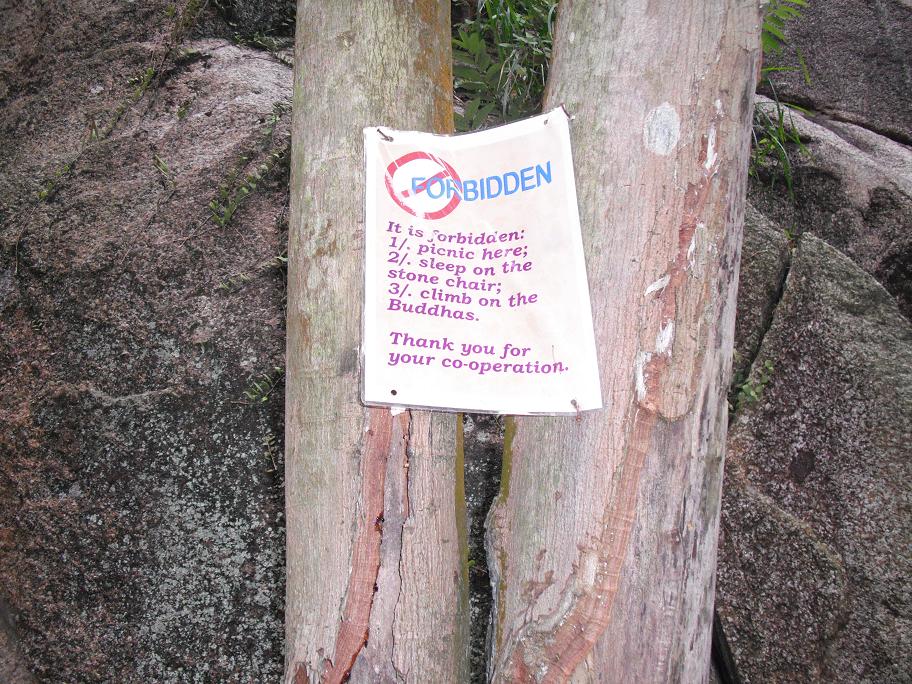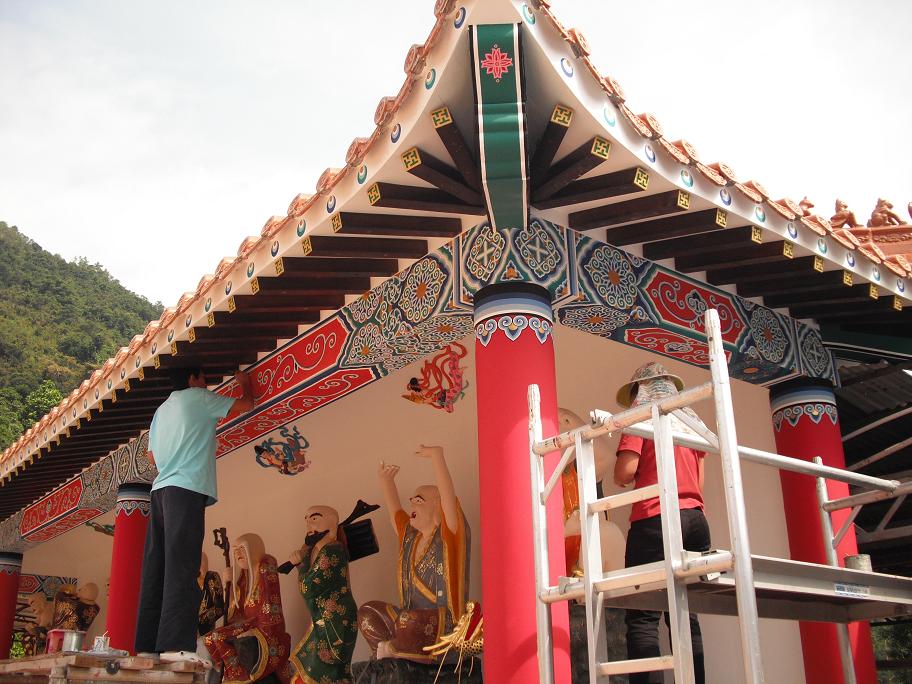Hong Kong: Ten Thousand Buddhas Temple
I went to this temple in 1993. It’s still there, but there are a lot more Buddha statues. Now the whole trail up the mountain (some 460 stairs) is lined with life-sized gold-painted Buddhas in astonishing variety:
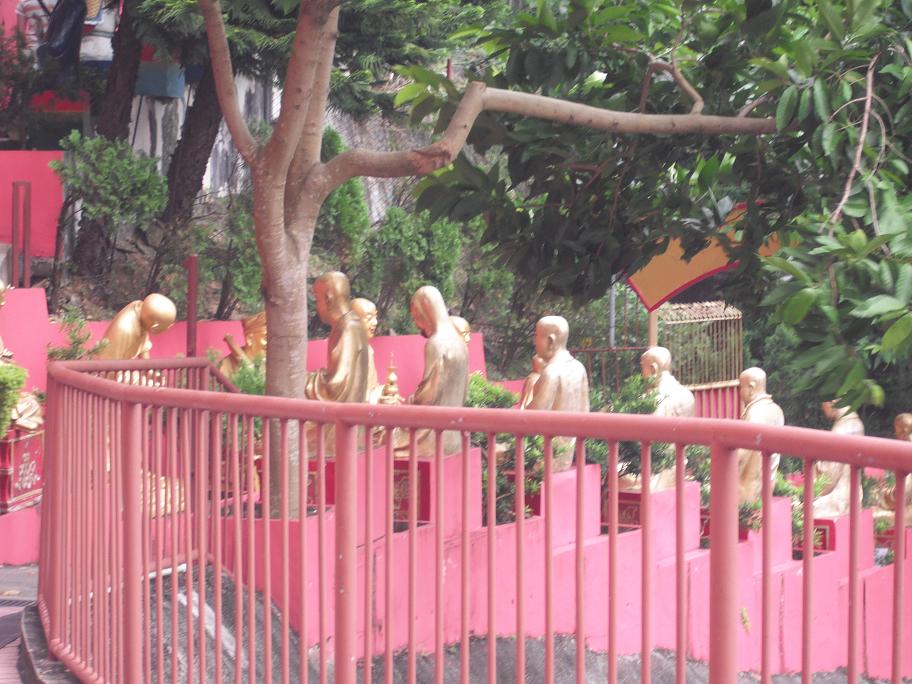
These are the ones you can see from the main pavilion about two thirds of the way up. And if you look down, you can see the ones who helped you up this far:
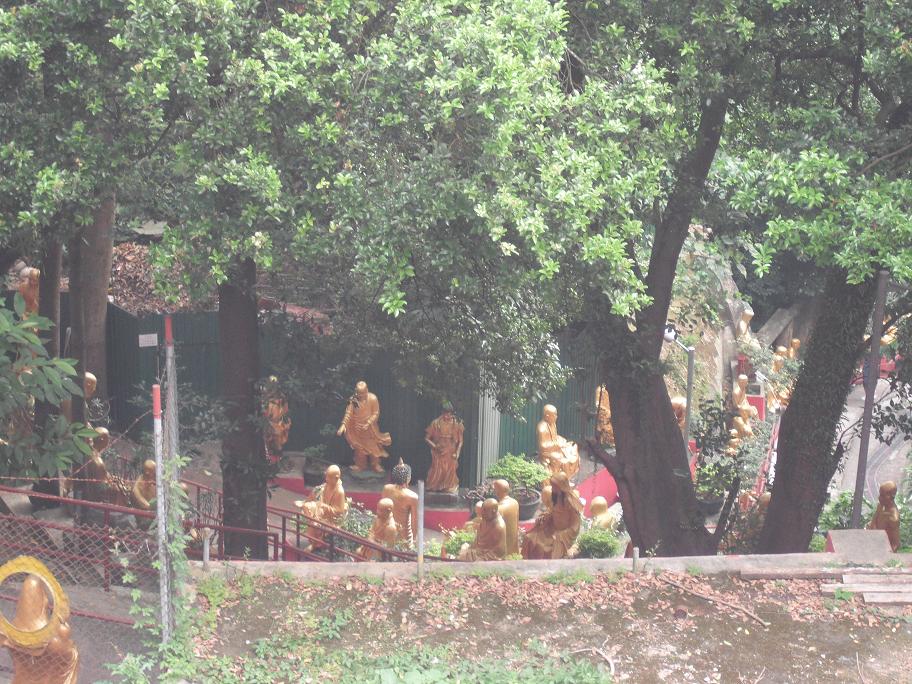
At this level, the main one that most people seem to be able to get to, there is a pagoda with a lot of seated Buddha statues. You can go up inside it, but it’s mostly a circular staircase and nothing else. There’s a restaurant; there’s a temple with the gilded corpse of an abbot of the local monastery in it – sorry, again no pictures inside the temples, which is just good manners – and there’s a small chapel to one side with arhats in it. The arhats are enlightened buddhas who have escaped from the cycle of reincarnation, but I have a feeling these have been interspersed with various Taoist heroes to spruce up the temple precincts (and appeal to a wider audience). There’s one whose eyebrows grow down to his waist, and others with various other attributes. But the one who caught our attention is this one:
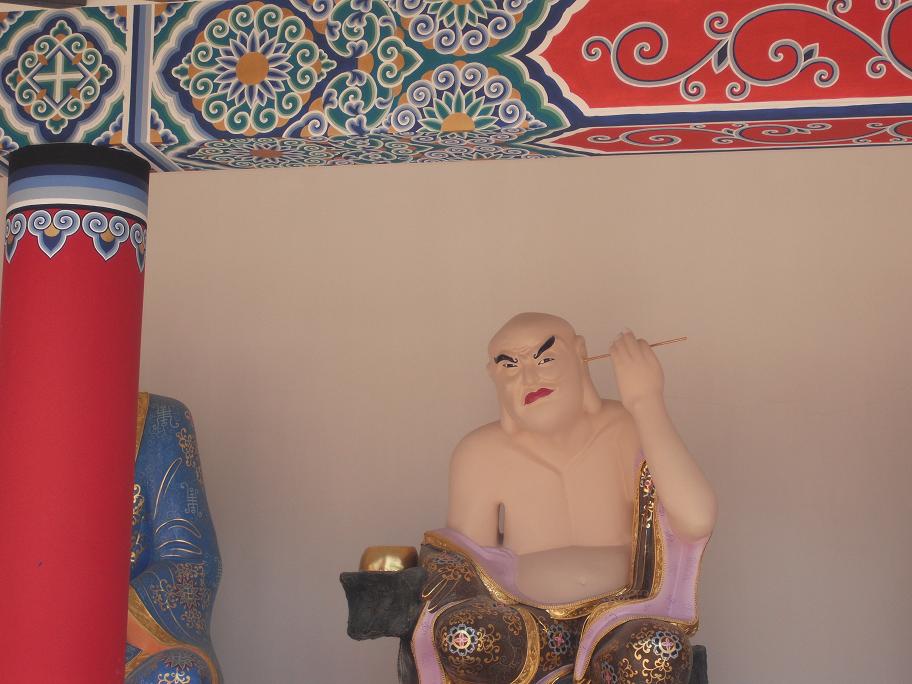
Maybe he’s an earhat.
Anyway, they were painting this pavilion with the typical bright and beautiful temple decorations that you can see on a lot of fancy Chinese temples. I’d never seen temple painters at work, so I photographed them.
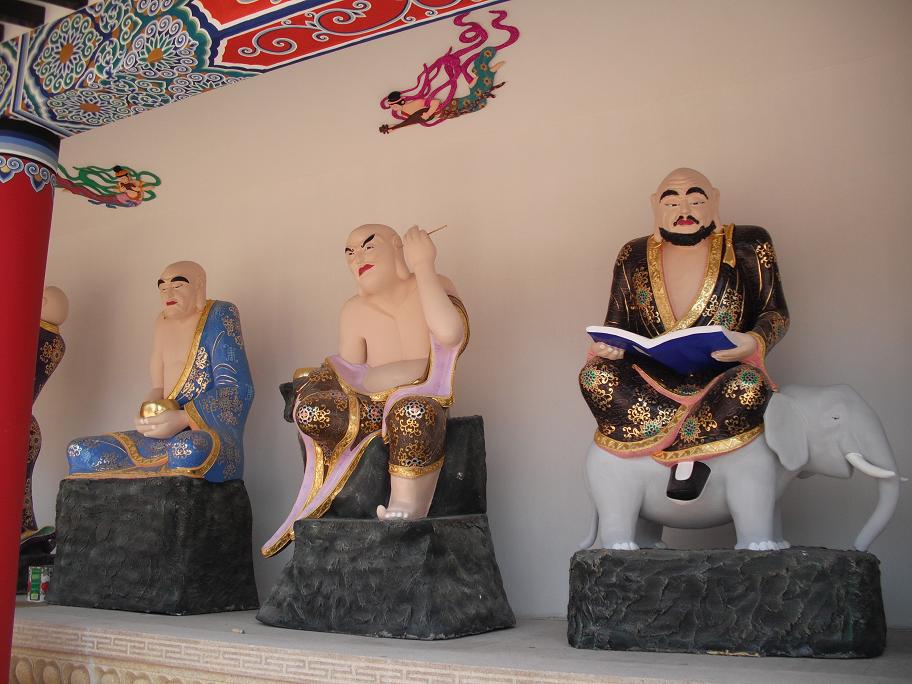
Once you’ve completed your devotions or tourism at this level, you can follow the Buddha trail further up the mountain until you reach the top. At this level the trail ends and there are several structures: an old house that might have been the original monastery; two new temples, both air conditioned (! just like the Buddha Tooth Relic Temple in Singapore’s Chinatown!), that contain many ancestral tablets, and maybe a few ancestral ashes, for worship and remembrance. One of these new temples has an enormous seated Buddha with a glowing stone bindhi in its forehead. If you watch long enough the bindhi changes colors, from red to orange, pink to blue, green back to red. It’s an LED. Again, alas, courtesy forebad the taking of photos.
But if you go outside and dodge the scent of stinky tofu wafting up from below, you can see a small red pavilion which contains a statue of the beloved abbot whose gilded corpse resides in the main temple area below. This area is adjacent to a Buddha-filled grotto, which is to some extent still under construction. Here are the golden Buddhas to keep the abbot company:
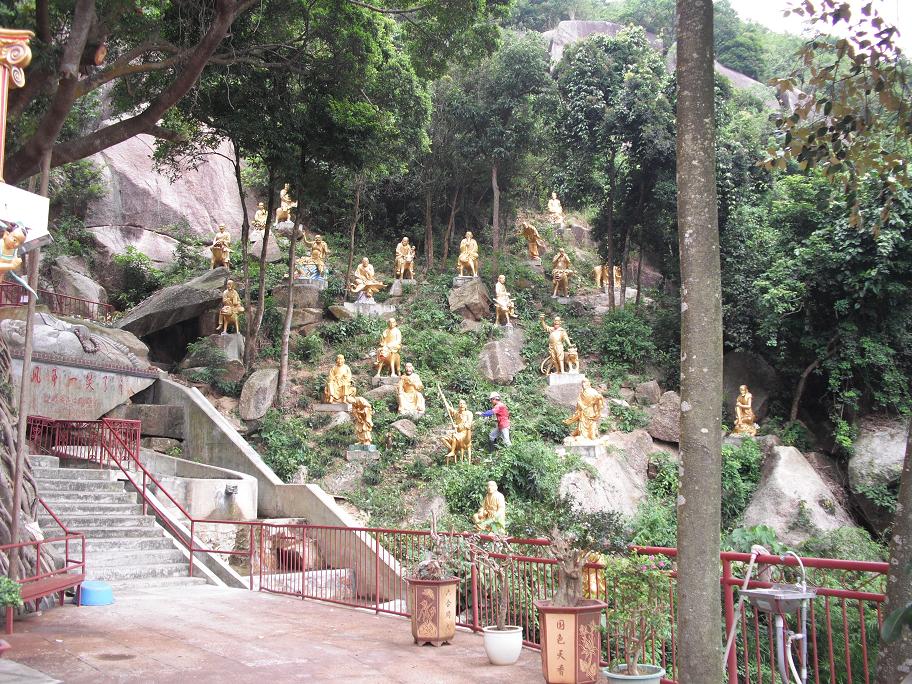
Here is the newly carved sleeping Buddha atop the as-yet-incomplete water feature:
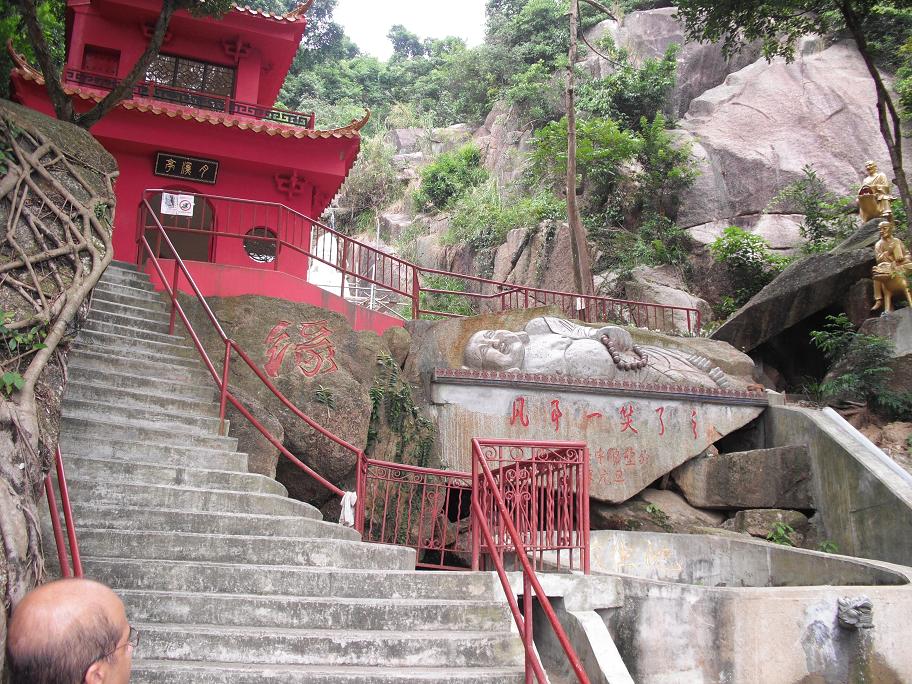
Here is the lovely and popular GuanYin, the Goddess of Mercy, who when her scaffolding is removed will overlook the entire valley (will her bindhi change colors too?):
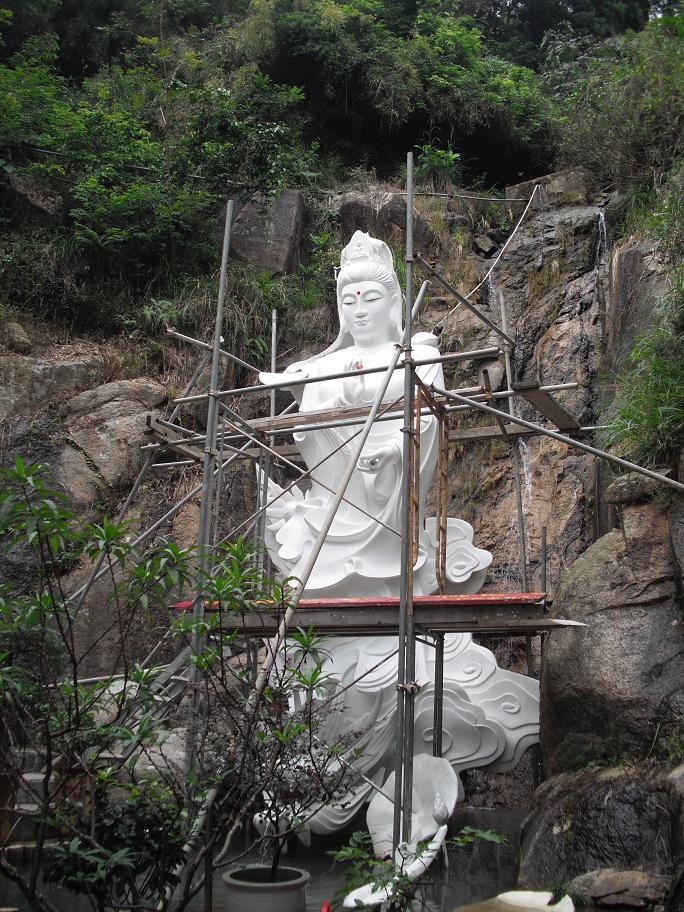
And finally, here is the sign in English that caps the entire experience for me:
